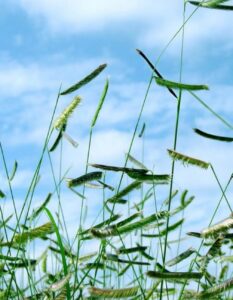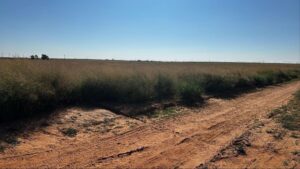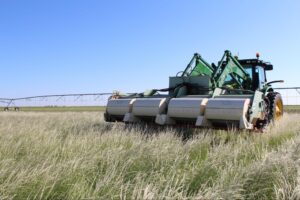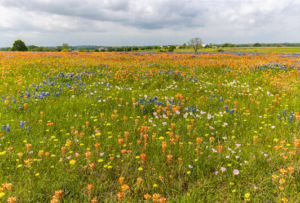Essential Seeds for Arid Environments
In the challenging environment of dry climates, choosing the right seeds for planting can make all the difference. Whether you’re a project manager overseeing a large-scale reclamation project or an agriculture professional aiming to enhance crop resilience, understanding the best drought-tolerant seeds is essential. This guide will provide you with insights into the top seeds that thrive in arid conditions, practical tips for planting in dry climates, and resources to ensure your project succeeds.
Understanding Drought-Tolerant Seeds
You don’t need to be an expert on botany and climatology, but understanding the basic principles of seeds, their benefits, how to plant, and long-term care are essential.
What Are Drought-Tolerant Seeds?
“Drought resistant” and “drought tolerant” are terms often used interchangeably, but they refer to different characteristics in plants.
- Drought Resistant: These plants avoid adverse effects of drought through mechanisms like deep roots or water storage, enduring long periods without water by minimizing loss and efficiently using moisture.
- Drought Tolerant: These plants can survive and grow in drought conditions by going dormant or reducing metabolic activities to conserve water until conditions improve.
Understanding the distinction between these terms helps in selecting the appropriate plants for specific environments and ensuring successful cultivation in dry climates.
Benefits of Planting Drought-Tolerant Seeds

Water Conservation
Drought-tolerant plants require significantly less water to survive and thrive, reducing the need for irrigation.
Cost Effective
Watering less means long-term savings and lower operational costs. Starting with drought-tolerant plants can also help you avoid costly replanting issues in the future.
Sustainability
Reduce the environmental impact of farming and contribute to more sustainable land management practices.
Erosion Control
Thanks to their deep root systems, these plants anchor themselves effectively, minimizing erosion risks and stabilizing soil against wind and water runoff.
Environmental Impact
These plants support biodiversity and enhance the resilience of natural habitats against extreme weather.
Top Drought-Tolerant Seeds for Dry Climates
Check your local soil report and native seed blend recommendations. Even the best drought-tolerant seeds may not thrive outside their native habitat. With that in mind, here are some examples to get you started.
Best Choices for Project Managers and Agriculture Professionals

- Blue Grama (Bouteloua gracilis) — Low-growing bunch grass that cures well and holds quality through the dormant season. Good grazing for livestock.
- Buffalograss (Bouteloua dactyloides) — Highly drought-tolerant shortgrass with both male and female plants, adapted to medium to fine-textured soils.
- Sideoats Grama (Bouteloua curtipendula (Michx.) — Growing 3-4 feet tall, great for wildlife or grazing, and extremely drought-resistant once established.
- Indian Grass (Sorghastrum nutans) — One of the highly-desired “big four” tall grasses, readily grazed by all livestock and medium tolerance to drought.
- Switchgrass (Panicum virgatum) — Adapted to the sandy soil of Texas, tolerates flooding for short periods and drought after establishment.
Learn more about custom seed blends for reclamation projects to enhance your planting strategy. If you need support choosing a blend, reach out to an expert.
Tips for Planting in Dry Climates
Even drought-tolerant plants and seeds need water and care to establish themselves. Without proper planting, plants can’t reach their full tolerance or resistance levels. Learn more about plant hardiness in your region and keep these two tips in mind.
Soil Preparation
Preparing the soil properly is crucial for the success of drought-tolerant seeds. Ensure the soil is well-drained and free of weeds. Adding organic matter can improve soil structure and water retention, giving seeds a better chance to establish.
Timing and Techniques

Planting during the early spring or late fall can take advantage of seasonal rains, reducing the need for additional irrigation. Using techniques like seed drilling can enhance seed-to-soil contact, promoting better germination rates.
By following these tips and leveraging the natural characteristics of drought-tolerant seeds, you can achieve successful planting and sustainable growth in dry climates.
Maintenance and Long-Term Care
To ensure the sustained health and resilience of drought-tolerant seeds in dry climates, diligent maintenance, and long-term care are essential.
Irrigation-Free Survival
For many project managers and agriculture professionals working in dry climates, irrigation is not a feasible option. Drought-tolerant local plants can thrive on rainfall alone or survive dry periods without the need to replant.
Weed Management
Implementing a weed management plan is essential to ensure that drought-tolerant plants do not compete with invasive species for limited water resources. Regular monitoring and timely intervention can prevent weed infestations.
Pest Control
Addressing pest issues promptly is vital to protect drought-tolerant plants from damage that can compromise their resilience in dry conditions. Integrated pest management strategies can minimize risks while maintaining ecological balance.

By integrating comprehensive maintenance practices such as monitoring soil moisture, managing weeds, optimizing nutrient levels, and controlling pests, you can foster thriving landscapes with drought-tolerant seeds. Proactive care ensures long-term success and sustainability in challenging environmental contexts.
Drought-Tolerant Seeds: A Strategic Choice
Planting drought-tolerant seeds is an essential option for project managers and agriculture professionals working in dry climates. By selecting the right seeds and following best practices for planting and maintenance, you can create sustainable and resilient landscapes that thrive even under challenging conditions.
Interested in finding the perfect drought-tolerant seeds for your next project? Contact us to connect with our Bamert Seed Company experts. Let’s work together to cultivate success in dry climates!



